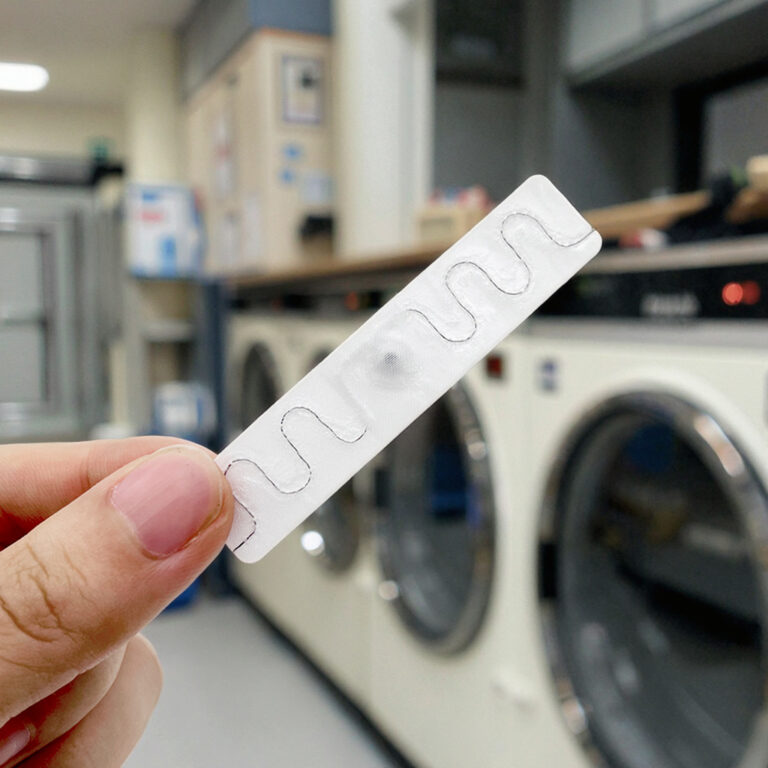Radio Frequency Identification(RFID), its principle is to achieve the purpose of identifying the target by non-contact data communication between the reader and the electronic tag. RFID is widely used include animal chips, electronic toll collection systems, access control, parking lot control, production line automation, material management, etc.
RFID technology can be divided into three categories according to the power supply method of its tag, which is passive RFID, active RFID, and semi-active RFID.
Passive RFID is the earliest, most mature and most widely. Passive RFID electronic tags receive microwave signals transmitted by radio frequency identification readers and obtain energy through electromagnetic induction coils to temporarily power themselves, thereby completing this information exchange. Because the power supply system is omitted, the volume of passive RFID products can reach the centimeter level or even smaller, and the structure itself is simple, the cost is low, the failure rate is low, and the service life is long. Passive RFID is generally used for close-range contact identification because the effective identification distance of passive RFID is usually short. Its main operating frequency bands are 125KHz, 134.2KHz, etc., which application like smart city bus cards, personal ID cards, campus cards, employee attendance cards, access control cards, canteen meal cards, etc.
Active RFID has only been around for a short time, but it has already played an indispensable role in various fields, especially in the electronic toll collection system on highways. Active RFID is powered by an external power supply and actively sends signals to the RFID reader. Due to its relatively large size, it has a longer transmission distance and a higher transmission speed. A typical active RFID tag can establish a connection with the RFID reader at a distance of 100 meters, with a reading rate of up to 1,700 read/sec. The main operating frequency bands of active RFID are 900MHz, 2.45GHz, and 5.8GHz, and it has the function of identifying multiple tags at the same time. The advantages of long-range and high efficiency of active RFID make it indispensable in some RFID applications that require high performance and a large range.
Later, the emergence of semi-active RFID solved the shortcomings of passive RFID and active RFID. Semi-active RFID is also called low-frequency activation trigger technology. Under normal circumstances, semi-active RFID products are in a dormant state, and only the part of the tag that holds data is powered, so the power consumption is small and can be maintained for a long time. When the tag enters the identification range of the RFID reader, the reader first uses a 125KHz low-frequency signal to accurately activate the tag in a small range to put it into working state, and then transmits information to it through 2.4GHz microwaves. In other words, first use low-frequency signals to accurately locate, and then use high-frequency signals to quickly transmit data. Its usual application scenario is: in a large range that can be covered by a high-frequency signal, multiple low-frequency readers are placed at different locations to activate semi-active RFID products. This not only completes positioning, but also realizes information collection and transmission.

So in what scenarios can RFID be used?
Logistics Management
Logistics warehousing is one of the most promising application areas of RFID. Many international logistics giants are actively experimenting with RFID technology, hoping to apply it to enterprises on a large scale in the future to improve logistics management and tracking capabilities. Its application process includes: cargo tracking, automatic information collection, warehouse management applications, port applications, postal parcels, express delivery, etc.
Public Transportation
Taxi management, bus hub management, railway locomotive identification, etc, to realize intelligent urban management with RFID.
Identification Management
RFID technology is widely used in personal identification documents because of its fast reading speed and difficulty in forging.
Anti-counterfeiting Management
RFID is difficult to forge, application areas include anti-counterfeiting of valuables (cigarettes, alcohol, medicines) and anti-counterfeiting of tickets, etc.
Asset Management
It can be applied to the management of various types of assets, including valuables, large quantities of highly similar items or dangerous goods such as book management, IT asset management, tool management, accessories management, equipment management, etc.
Traceability Management
RFID can be applied to the traceability management from production to sales of fruits, vegetables, fresh produce, and food .
Information Statistics
The application of RFID technology has made information statistics a simple and fast task. The query software of the archive information management platform sends out a statistical check signal, and the reader quickly reads the data information and related storage location information of the archives, and intelligently returns the acquired information and the information in the central information database for verification. For archives that cannot be matched, the manager uses the reader to conduct on-site verification, adjust the system information and on-site information, and then complete the information statistics work.
Security Control
The security control system can realize the functions of timely monitoring and abnormal alarm of archives to prevent archives from being destroyed or stolen. When archives are borrowed and returned, especially physical archives, they are often used for exhibition, evaluation and inspection, etc. The manager carefully checks the returned archives and verifies them with the information before the archives were borrowed, so as to timely find out whether the archives are damaged or missing.





